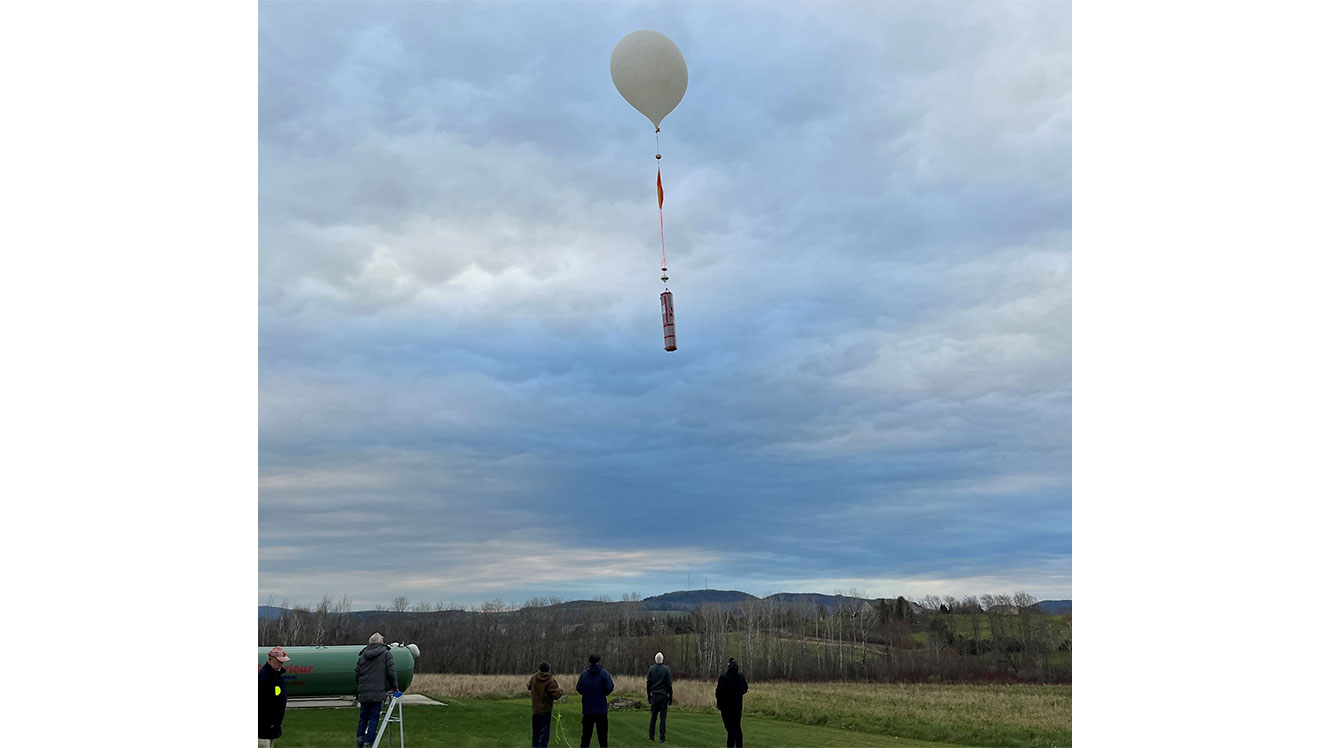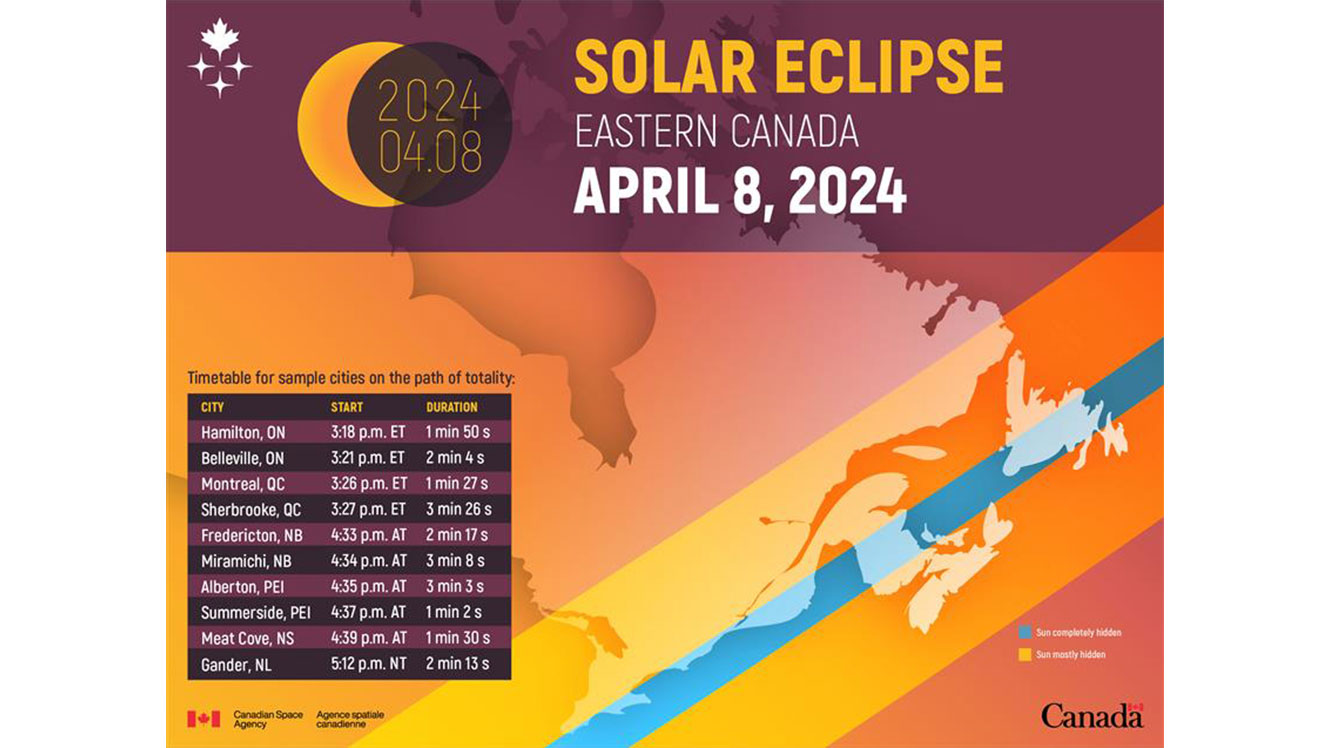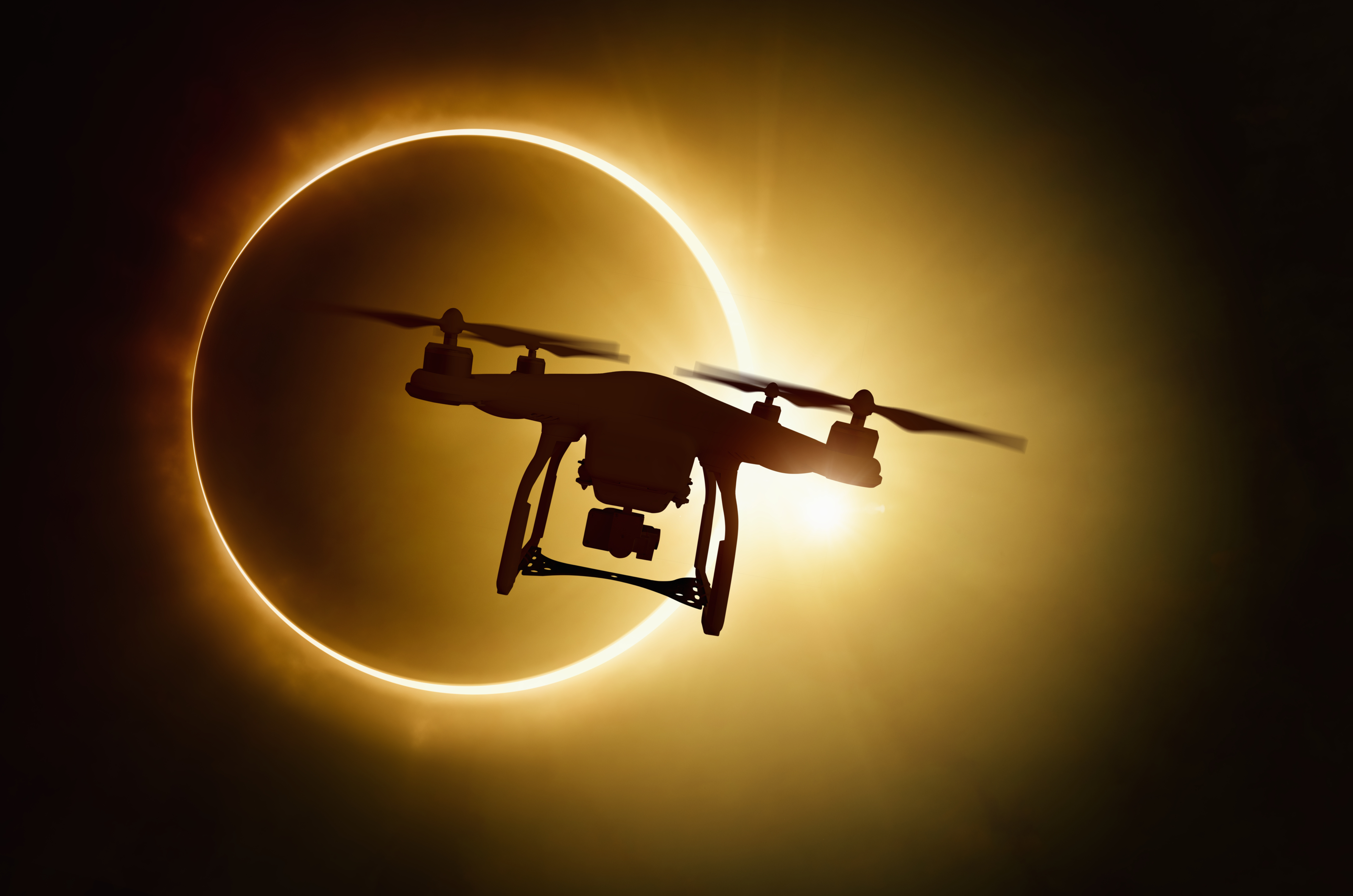







April 3, 2024
Final preparations are underway to launch a ‘balloon-borne solar telescope’ from a field in Florenceville-Bristol, New Brunswick on April 8, to capture spectacular images of the solar eclipseOpen a new window as it streaks across the province out to the Atlantic Ocean and off the face of the earth.
The Balloon Solar Eclipse ProjectOpen a new window is being described as the only citizen-led project of its kind outside of NASAOpen a new window. The balloon, which is scheduled to launch at approximately 3:32 (ADT), will carry six cameras to live stream images to the internetOpen a new window and can soar 30 kilometres into the atmosphere. The rest is up to the wind.
The balloon launch is one of many scheduled activities NAV CANADA will be supporting as the country welcomes the first total solar eclipse to cross over parts of Canada in 45 years. Organizers have worked closely with the area control centre (ACC) in Moncton, which has been coordinating with air traffic service (ATS) professionals in Gander and Boston for ‘Eclipse Day’. It is the unscheduled events that NAV CANADA is getting ready for.

There is no danger flying across the path of an eclipse. In the U.S., Delta Airlines has scheduled two special ‘path-of-totality’ flights from Dallas and Austin, Texas to Detroit, timed to give umbraphiles or solar eclipse-chasers the opportunity to view the eclipse from 30,000 feet. No similar commercial flights are planned for Canada. The expectation is that more recreational pilots will take to the air to follow the eclipse, weather permitting.
The last total solar eclipse to pass over Canada was February 20, 1979. A solar eclipse crossed west to east over the continental United States in 2017. This is where the FAA and NAV CANADA are taking cues from. This year’s Great North American Eclipse will be an even bigger show, viewed by millions more people.
In 2017, the U.S. National Air Traffic Controllers Association reported 20 to 40 per cent increases in air traffic at control centres that were in range of the path of totality. Mostly visual flight rules (VFR) traffic as pilots hopped into their private airplanes to catch the action. NAV CANADA isn’t expecting a similar bump in 2024 because our population across the path of totality is not as large or concentrated, and our country is home to fewer private aircraft.
“We are treating this as an all-hazards approach,” says André Charron, Director of Security and Planning at NAV CANADA. “The operations team is well versed in these types of activities. There are already procedures in place to deal with these things.”
A solar eclipse happens when the moon blocks the sun, plunging cities and towns along the path of totality into darkness. A solar eclipse isn’t uncommon, happening at least once a year. But with approximately 70 per cent of the earth’s surface covered by water, observing one in your own backyard is rare. The next total eclipse we'll experience in Canada is in 2044, when the path of totality will cut through western Canada.

Image from Canadian Space Agency.
The maximum phase of the Great North American EclipseOpen a new window, when the moon completely covers the sun, will enter Leamington in southern Ontario at 15:13:43 (EDT). For approximately 34 minutes, the eclipse will travel at 2,400 kilometres an hour across a thin geographic pathOpen a new window, 100 to 115 kilometres wide, over Ontario, Quebec, New Brunswick and Prince Edward Island, exiting the stage at Bonavista, on the central east coast of Newfoundland at 17:13:43 (NDT).
Populated areas along the path of the umbra, the darkest part of the moon’s shadow, include Niagara Falls, Kingston, Montréal, Lac Mégantic, Miramichi, Cape Breton, Summerside and Gander. Cities just outside the band will be treated to impressive views of a partial eclipse. The eclipse will impact NAVCANADA’s Toronto, Montréal, Moncton and Gander flight information regions (FIRs).
A solar eclipse presents short viewing windows across a narrow band. The full width of the band cannot be determined until closer to the event. Depending on the weather cooperating, the eclipse will be visible for between 1 minute / 17 seconds (Montréal) and 3 minutes / 44 seconds (Fort Erie) in any one location. A rule of thumb is two to three minutes at most locations, with Drummonville, Quebec being an outlier at 35 seconds. Literally blink and you’ll miss it.
It is during these times that pilots should plan for a burst of activity at airports inside or in proximity to the path of totality, especially VFR aircraft flying at low altitudes, and be prepared for potential impacts to airport operations, including delays, diversions and other restrictions.
NAV CANADA is also expecting requests from commercial flights to travel within the path of totality. New Brunswick will be experiencing the eclipse as Moncton ACC is handling westbound traffic flow coming in from Europe. “It is a very narrow band and we won’t be able to accommodate everyone,” says Kyle Clarkson, Operations Duty Manager at NAV CANADA.

What wasn’t a concern during the 2017 eclipse was the influx of drones. It is still not clear what the use of a drone might be, except to take photographs. Umbraphiles insist that an eclipse should be viewed by the naked (properly protected) eye. “There is still an approvals process to go through to fly a drone in controlled air space. If we see an uptick in that we can provide added direction,” Charron notes.
NAV CANADA is well prepared to handle Eclipse Day. Extra staff are being brought in to handle demand for increased VFR traffic, and the service provider has been coordinating with local authorities in impacted areas.
“This is a notable event for many Canadians,” Charron adds. “NAV CANADA has procedures in place for events like this. Our operations teams prepare for this day in and day out and they excel at it. For everyone who chooses to experience this celestial event from Canada’s skies, know that we will be here to support you to the best of our ability.”